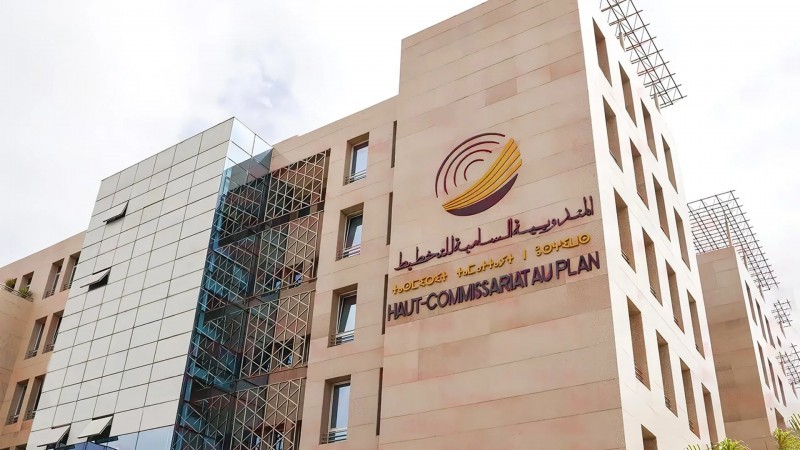Morocco's Economic Growth Slows to 2.4% in Q2 2024 Amid Sectoral Challenges

Rabat - Morocco’s economy experienced a slight slowdown in the second quarter of 2024, with growth easing to 2.4% down from 2.5% during the same period last year.
The Moroccan High Commission for Planning (HCP) report for the second quarter of 2024 reflects a noteworthy economic slowdown, particularly in the primary sector, where seasonally adjusted added value contracted by 5%, a sharp reversal from the 1.2% growth recorded during the same period in 2023.
This downturn was driven by a 4.5% decline in the agricultural sector, which had grown by 1.5% the previous year, and an even steeper 14.7% drop in the fishing industry, following a 4.5% decrease in 2023. In contrast, the secondary sector rebounded, with its added value rising by 3.8% recovering from a 2.4% decline in the previous year.
This growth was largely fielded by major improvements in the extraction industry, which surged by 23.6% following a 9.6% drop, as well as the construction and public works sectors, which expanded by 3.6% after a previous decline of 2.4%
The manufacturing sector also saw a 2.9% rise, reversing a 1.6% decrease from the previous year. However, the electricity and water sector experienced a 6.3% decline, in contrast to the 0.8 growth recorded in the same period of 2023.
The tertiary sector experienced a slowdown in Q2 of 2024, with growth easing to 3.1%, down from 5% in the same quarter of 2023. Pillar activities such as accommodation and food services saw a sharp deceleration, rising by 9.3% compared to 32.8% a year earlier, while transportation and warehousing slowed to 5.1% from 6.9%. Similarly, research, development, and business services grew by 3.8%, down from 4.4%.
Other sectors also reflected this trend, with growth in education, health, and social services declining to 2.7% from 4.8%, real estate services falling to 2% from 3.2%, financial and insurance services dropping to 0.9% from 3.1%, and information and communication services shrinking to 0.5% from 4.2%.
Despite these declines, some areas showed resilience, as public administration and social security services posted a slight increase, growing by 3.6% compared to 3.3% the previous year, while trade and vehicle repair services improved, rising by 1.9% from 0.9%. Overall, non-agricultural activities grew by 3.2% in Q2 2024, up from 2.5% in the same quarter of 2023.
Factoring in a 3% increase in net taxes on products, GDP grew by 2.4% in volume during Q2 2024, slightly lower than the 2.5% growth recorded a year earlier. In current prices, GDP rose by 3.6%, with the general price level increasing by 1.2%, a drop from the 7.3% rise in Q2 2023.
Growth from domestic demand hindered by external trade deficits
Domestic demand saw a marked improvement in Q2 2024, rising by 5%, a leap from the mere 0.1% growth recorded in the same period of 2023. This surge contributed 5.2 percentage points to economic growth, up from just 0.01 points a year earlier.
Household final consumption increased by 3.1%, compared to 0.6% in 2023, contributing 1.7 percentage points to growth, up from 0.4 points the previous year. Public administration's final consumption, while growing more slowly at 3.8%, down from 4.9% in 2023, still added 0.7 percentage points to overall growth.
Gross investment, including changes in inventories and net acquisitions of valuables, also rebounded sharply, rising by 8.9% in Q2 2024 after a 4.2% drop in the same period of the previous year. This reversal contributed 2.7 percentage points to growth, recovering from the negative contribution of 1.4 points in 2023.
Foreign trade in goods and services also saw substantial movement, with both imports and exports increasing exponentially. Imports surged by 12.9%, a dramatic uptick compared to the 0.2% growth in 2023, resulting in a negative contribution of 6.3 percentage points to overall growth, up from a negative 0.1 points a year earlier.
Meanwhile, exports rose by 7.8%, compared to 5.5% in the same quarter of the previous year, contributing 3.4 percentage points to growth, up from 2.6 points a year earlier. As a result, foreign trade in goods and services made a negative contribution to overall economic growth, amounting to 2.9 percentage points, compared to a positive contribution of 2.5 points in Q2 2023.
With GDP at current prices growing by 3.6% in Q2 2024, a drop from the 9.8% growth seen in the same period of 2023, and net income from abroad rising by 4.7%, gross national income slowed sharply, increasing by just 3.7% compared to 9.3% the previous year. National final consumption grew by 4.1%, down from 6.2% in 2023, leaving national savings at 32.1% of GDP, slightly lower than the 32.4% recorded a year earlier.
Gross investment, including changes in inventories and net acquisition of valuables, accounted for 33.2% of GDP, up from 31.7% in Q2 2023, leading to a financing gap of 1.1% of GDP.
Last week, the European Bank for Reconstruction and Development (EBRD) projected a 2.9% growth for Morocco's economy in 2024. Similarly, during its third quarterly meeting of 2024, the Council of Bank Al-Maghrib (BAM) reviewed the national and international economic landscape and shared its medium-term macroeconomic forecasts. While BAM expects a slight decline in economic growth to 2.8% by the end of 2024, it anticipates a rebound to 4.4% in 2025.

